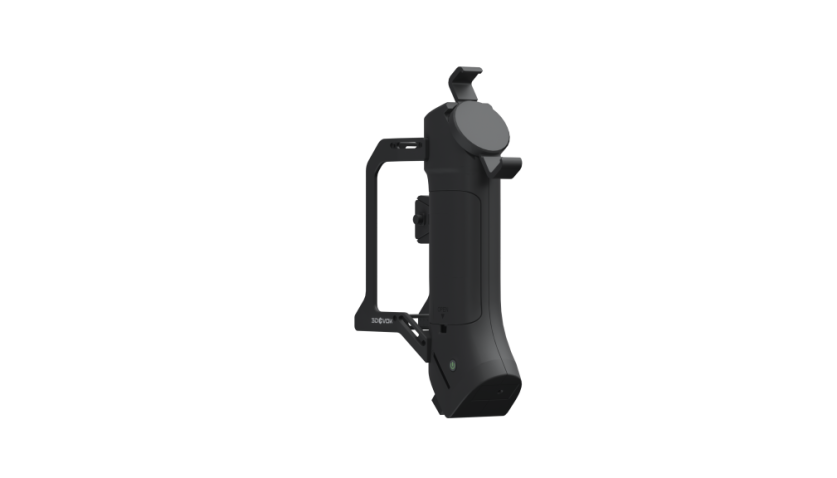Streamlining Your 3D Printing Process with Accurate Object Scanning
03/27/25
In the rapidly evolving world of 3D printing, efficiency is key to maintaining a smooth and productive workflow. One of the most significant ways to ensure this efficiency is by leveraging 3D printing and 3D scanner technology. Accurately scanning objects before printing not only saves time but also reduces errors, resulting in better quality prints and more streamlined processes. In this article, we’ll explore how 3D scanning plays a pivotal role in improving your 3D printing workflow, how to select the right equipment for precision and ease of use, and how to troubleshoot common issues that might arise during the scanning process.

3D scanning is at the heart of modern 3D printing workflows. By creating a precise digital model of a physical object, it allows you to avoid the lengthy and error-prone process of manually designing the object from scratch. The scanning process captures the shape, texture, and details of the original object, making it possible to reproduce even the most complex designs with ease.
For professionals working in fields like product development, manufacturing, or design, 3D scanning significantly accelerates the prototyping and iteration stages. It allows for rapid testing of ideas, making adjustments before investing in the printing stage. Additionally, accurate scanning ensures that objects fit perfectly, reducing the need for post-print modifications and improving overall project efficiency.
By streamlining the scanning process, we can enhance our entire 3D printing workflow, cutting down on costly mistakes and time-consuming revisions.
Exploring 3D Scanner Options for Precision and Ease of Use
The right 3D scanner can make all the difference in ensuring accuracy and ease of use throughout your printing workflow. However, with so many options available, it’s essential to choose the scanner that best suits your needs.
When selecting a 3D scanner, consider several factors:
Object size and detail: Larger objects or intricate details may require specific scanners with higher resolution capabilities.
Resolution and accuracy: High-resolution scanners capture more detailed features, which is critical for prints that need fine precision.
Ease of use: Some scanners are designed for professionals with technical expertise, while others are more intuitive, offering a user-friendly experience for beginners.
At 3DeVOK, we offer a range of scanning solutions designed to cater to both precision and ease of use. Whether you need a handheld scanner for small objects or a stationary one for larger designs, we have options that help streamline your workflow while ensuring exceptional accuracy.Investing in the right scanner for your needs ensures that you’ll spend less time troubleshooting scanning errors and more time creating high-quality 3D prints.
Troubleshooting Common Issues During the Scanning Process
While 3D scanning technology has come a long way, it’s still not entirely free of challenges. Being aware of common issues and knowing how to overcome them can save you time and frustration in the long run.
Here are some of the most common challenges faced during the scanning process and tips for troubleshooting:
Surface reflections: Reflective or shiny surfaces can confuse scanners and lead to poor results. In these cases, apply a matte coating or a special scanning spray to reduce glare and improve scan quality.
Incomplete or missing data: This issue typically occurs when parts of the object are obscured or the scanner isn’t able to capture all angles. In such cases, reposition the scanner or the object, and take additional scans from different angles. Software tools can help stitch these scans together later.
Low-resolution scans: If the scan resolution is too low, the printed object may lack detail. Ensure that your scanner is set to the highest resolution possible for the level of detail required in the final print.
Movement or instability: If the object or scanner moves during the scanning process, it can result in misaligned or blurry data. Secure the object and scanner on a stable surface to avoid this issue.
At 3DeVOK, we provide detailed troubleshooting guides for each of our scanners, along with customer support to help resolve any issues that arise during the scanning process.
Conclusion
Incorporating accurate 3D scanning into your printing workflow can make a significant difference in the speed, accuracy, and overall quality of your projects. By understanding the importance of scanning, selecting the right equipment for your needs, and troubleshooting common issues, we can optimize your 3D printing process from start to finish. We’re dedicated to offering cutting-edge scanning solutions that help businesses streamline their workflows and create high-quality 3D prints with ease. Whether you’re in product design, prototyping, or manufacturing, implementing efficient scanning practices will not only improve your output but also help you stay ahead of the competition.
Related Articles
View Our Product





